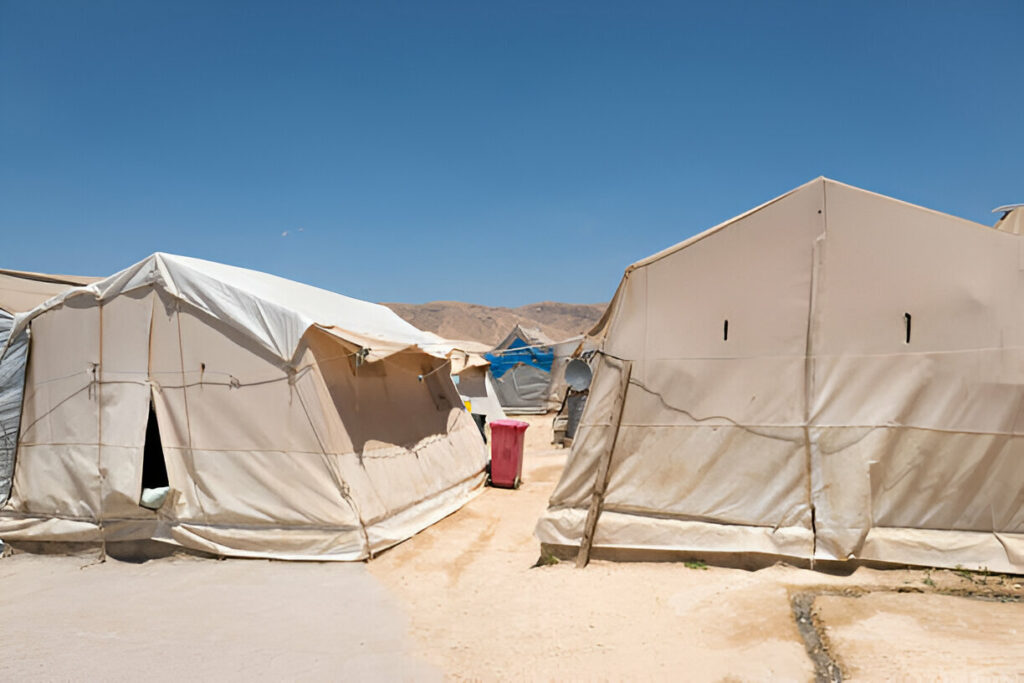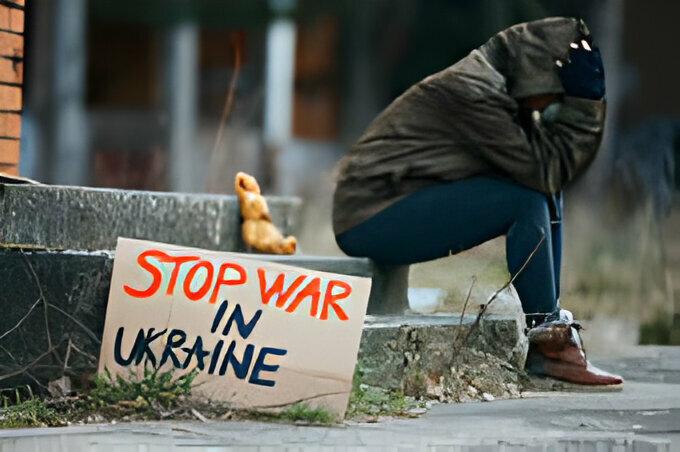
As global conflicts and crises persist, the number of displaced individuals seeking refuge continues to climb, reaching millions worldwide. Among their most pressing needs is housing—a fundamental requirement for stability and integration. This article delves into the challenges refugees face in securing adequate housing and explores effective strategies that can provide sustainable solutions.
The Refugee Situation and the Need for Housing Solutions
The current global situation is deeply concerning, with over 114 million people recognized as refugees by the United Nations High Commissioner for Refugees (UNHCR). Additionally, millions are internally displaced within their own countries, such as in Ukraine, due to ongoing conflicts. These individuals, whether crossing borders or displaced within their own countries, typically arrive at their new locations with very few resources and face immediate housing challenges. The difficulties in securing housing for both refugees and internally displaced persons (IDPs) are numerous, including legal and bureaucratic obstacles that make it hard for them to rent homes or access public housing programs. Economically, many of these displaced persons face unemployment and low incomes, which restrict their housing options and often lead to poor living conditions.
Furthermore, social barriers add to the housing crisis for both refugees and IDPs. Discrimination and lack of local support can isolate these individuals and families, making it difficult for them to integrate into communities and gain acceptance. This isolation can prevent them from accessing necessary services, finding jobs, and building stable lives. The impact of inadequate housing is significant, affecting not just the physical health of these displaced persons but also their mental well-being, their ability to work, and the educational opportunities for their children. There is a critical need for comprehensive housing solutions that specifically cater to the unique needs of refugees and internally displaced persons, emphasizing the importance of developing targeted approaches to help those affected by conflict and disruption.
Strategies to Provide Housing for Refugees
Addressing the housing needs of refugees and internally displaced persons (IDPs) requires innovative and sustainable strategies. Effective housing solutions not only provide shelter but also promote stability, dignity, and integration into new communities. The following strategies have been developed to tackle the diverse challenges displaced populations face, ensuring they have access to safe and affordable housing.
Government Subsidies and Financing
Government subsidies and special financing programs are essential in easing the financial burdens that often hinder refugees and internally displaced persons (IDPs) from accessing suitable housing. These supports can take various forms, such as low-interest loans and direct rent assistance. Low-interest loans help refugees and IDPs afford the purchase or construction of homes, making homeownership more accessible despite limited incomes. Direct rent assistance, on the other hand, provides monthly financial aid to help cover rental costs, which is particularly beneficial for those who have not yet secured stable employment.
Additionally, governments can offer grants to construct or modify homes to meet the specific needs of displaced populations. These grants can facilitate the building of new homes or the adaptation of existing structures, ensuring that accommodations are both functional and comfortable for refugees and IDPs. This direct intervention by the government not only provides immediate housing solutions but also promotes long-term stability for displaced families.
Modular and Prefabricated Homes
Modular and prefabricated homes offer a practical and efficient solution for quickly providing safe and affordable housing to displaced populations. These types of homes are constructed in factories and then transported to their final location where they are assembled. The process allows for rapid construction and installation, which is crucial in situations where immediate housing is necessary, such as for refugees and internally displaced persons (IDPs) who need quick resettlement near their original homes or in safer regions.
The flexibility of modular and prefabricated homes is one of their major advantages. They can be set up in a variety of environments and configurations, depending on the needs and the number of people they are designed to accommodate. This makes them an ideal option for emergency housing as they can be adapted to fit the specific circumstances of different displaced populations. Additionally, their cost-effectiveness makes them a viable option for governments and NGOs looking to maximize resources while addressing urgent housing needs.
Tiny Homes
Tiny Homes offer a unique and effective solution for providing affordable and rapidly deployable housing, particularly beneficial in areas like Ukraine where internal displacement has become a critical issue. These compact, efficiently designed homes are ideal for regions with limited space or resources, offering a dignified and stable living environment for displaced families. As the conflict within Ukraine has led to significant internal displacement, the need for sustainable housing solutions has become increasingly urgent.
In response, Transform Ukraine has utilized tiny homes to address this growing demand. Initially, our organization established several temporary housing locations as refugees and internally displaced persons from cities like Kyiv and Odesa sought safe shelter. These efforts quickly expanded from 2 to 11 sites, providing 550 beds. However, the limitations of these temporary shelters, which typically offer only one or two nights of accommodation, highlighted the necessity for more permanent solutions. Construction of Tiny homes has emerged as a vital part of our strategy, providing not just a temporary refuge but a long-term, community-focused living space where families can thrive, access local employment opportunities, and integrate effectively into the community.
Community Sponsorship Programs
Community sponsorship programs play a crucial role in the housing and integration of refugees and internally displaced persons (IDPs). These initiatives harness the power of local communities to provide essential support, going beyond merely offering shelter. By engaging local resources and fostering collaboration among residents, these programs ensure that newcomers are welcomed and supported, creating a strong foundation for their new lives. This involvement ranges from financial contributions and providing accommodation to offering employment opportunities and social integration activities, all aimed at easing the transition for displaced individuals.
The impact of community sponsorship extends further than just providing housing; it also significantly contributes to building a supportive environment that enhances community cohesion. Through these programs, both newcomers and local residents benefit from increased cultural exchange and mutual understanding, which strengthens the social fabric of the area. Additionally, these initiatives empower local communities by giving them an active role in the resettlement process, promoting a sense of responsibility and solidarity that is vital for the successful integration of refugees and IDPs.
Renovation of Vacant Properties
Renovating existing vacant properties to create livable spaces for displaced persons is an efficient and effective strategy to address the urgent housing needs of refugees and internally displaced persons (IDPs). By transforming underused or abandoned buildings into functional homes, this approach makes good use of available resources and reduces the time and costs associated with new construction. It is especially beneficial in urban areas where vacant properties often exist but are not optimized for residential use. Through renovation, these spaces can be quickly converted to provide safe and adequate housing, helping to alleviate the accommodation crisis for displaced populations.
This strategy not only increases housing availability but also contributes to the revitalization of neighborhoods and the prevention of urban decay. Additionally, renovating buildings for housing supports environmental sustainability by recycling existing structures rather than consuming new land and resources. This holistic approach not only meets immediate housing needs but also promotes long-term community and environmental health.
Legal Assistance and Advocacy
Providing legal assistance to displaced persons is essential to help them navigate the complexities of housing laws and secure their rights as tenants. This support includes educating refugees and internally displaced persons (IDPs) about their legal rights in the housing market, which is crucial for protecting them from exploitation and discrimination. Legal advocates work to ensure that these individuals understand their rights to fair treatment, access to public housing benefits, and protection against unlawful evictions. This guidance is vital for helping them secure stable and safe accommodations, which are foundational to their successful integration and well-being.
Moreover, legal assistance and advocacy play a critical role in combating discriminatory practices that displaced persons often face from landlords and local communities. By providing representation and support, legal professionals can challenge these injustices directly, ensuring that refugees and IDPs have equal opportunities to secure housing. This not only helps individuals and families but also serves to educate property owners and communities, promoting a more inclusive and fair housing environment for all.
Long-term Leasing Agreements
Long-term leasing agreements are a strategic approach used by organizations to secure stable and affordable housing for displaced persons. By entering into extended lease contracts with property owners, these organizations can guarantee a consistent place of residence for refugees and internally displaced persons (IDPs), reducing the uncertainty and stress associated with frequent moves. This stability is crucial for displaced individuals and families as it allows them to establish a more permanent base, facilitating better integration into the community and improving their overall well-being.
These agreements not only benefit the displaced by providing them with a sense of security and continuity but also offer advantages to property owners, such as regular income and reduced vacancy rates. Furthermore, long-term leases can help mitigate the risk of sudden rent increases and eviction, common issues that can destabilize vulnerable populations. By promoting stable housing conditions, these leases play an essential role in the long-term support and resettlement of displaced persons, helping them rebuild their lives with dignity and safety.
How You Can Help
As we continue to address the critical housing needs of refugees and internally displaced persons in Ukraine, the role of each individual and organization in supporting these efforts becomes increasingly significant. The construction of tiny homes has emerged as a sustainable solution to provide safe, permanent, and affordable housing for those affected by the ongoing conflict. By donating to the Transform Ukraine efforts, you have the power to make a tangible difference in the lives of countless families in need.
Your contribution will directly assist in building and sustaining tiny home communities, offering not just a roof over heads but a foundation for stable, integrated, and productive lives. Each donation helps ensure that displaced families can have a place to call home, where they can feel secure, access local employment opportunities, and contribute to the community. Join us in our mission to transform lives through compassion and action. Your support is not just a donation—it’s a step towards rebuilding communities and restoring hope for those who have lost so much. You can learn more about donating here.
Related Post:
6 Effects of War on Families


